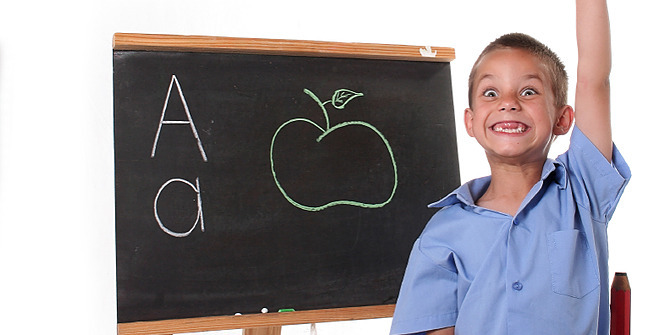Every parent has their own idea about what it means to have a child who turns out “well.” In this article we present ideas about how you can use this relationship to help your child develop skills and personal qualities that are linked to learning to make good decisions.
The ability to make choices begins in infancy. For example, babies make gestures and expressions that indicate they prefer one toy over another, even if they can’t reach out and grab the preferred toy.
Toddlers demonstrate decision-making and making choices as their world expand and they increasingly assert their independence.
Elementary-school children are faced with choices daily. This may involve what clothing to wear, which activities to play, what food to choose for their lunch meal.
1. Demonstrate decision-making and problem-solving at home
If your child is facing an obstacle or a major decision, teach them a step-by-step process of decision-making (adjusting the sophistication of the steps and your language according to the maturity of the child).
A good process to follow is:
- Sit down in a quiet place with a paper and a pen and a snack.
- Ask your child to describe the problem as specifically as possible, without emotion, and write it down.
- Encourage your child to brainstorm as many solutions as possible. Join them in brainstorming and ask them to write everything down without judgement.
- Review the options, discussing the possible outcomes of each.
- Decide together on the best course of action.
- Follow through to make sure the plan is carried out effectively
2. Encourage learning by modeling
Children benefit from hearing your thought process used to arrive at a decision. They will learn how to make a decision, why the decision was made, and the process you followed to come to that decision.
Rather than simply saying “yes” and “no” to a choice that is presented to you in the presence of your child, what can you say or do instead?
3. Teach your child that choices have consequences
A lasting way to immunize your child against bad choices is to let them experience the natural consequences of their actions.
What mistakes can you allow your child to make so that they can learn a valuable lesson about making choices and the consequences that follow?
Suggestions:
- If your school-age child doesn’t complete his homework on time, allow them to suffer the penalty.
- Allow your toddler to explore without constant guidance and experience the consequences of bumping his head on a piece of furniture
Note: Of course, ensure that you preserve the safety of your child if they are exploring. Watch over them and intervene if something harmful could happen. But a small bump or a small homework task not completed on time can teach a valuable lesson without having dire consequences. Use your best judgement.
4. Make the most of learning moments
- When your child makes a wrong choice, turn that experience into an opportunity for learning.
- What real-world choice is your child about to make, or might they soon encounter, that offers an opportunity for you to create a teachable moment?
- What choice(s) are occurring that you can turn into a lesson and draw your child’s attention to?
Note: If your child makes a decision with negative consequences, resist the temptation to say “I told you so” or “you should have chosen differently.” Rather, be sympathetic and talk over the situation. Gently point out or ask what might have been done differently.
5. Play the ‘rewind’ game
William and Martha Sears, experts in child development, suggest this game. If you tell your child not to run on wet pavement but they do it anyway, thus falling and bruising themselves, take them by the hand in a caring way and say “hold on…rewind.” Then, walk backward to a position in front of the puddle then move forward slowly and go around the puddle. The “rewind game” gives your child the opportunity to compare his decision and the consequences with the choice that you have recommended.
Other suggestions:
- Give your child simple choices every day. Create opportunities for choices and, if you can live with any option, allow your child to make the choice.
- Ask questions to guide your child’s decision-making process.
- Point out the possible repercussions of choices by helping your child remember past situations and their consequences.
- Teach your child to stop and pause before making a choice. During this time, help them weigh the pros and cons of the choice.
- Let children learn by experiencing the consequences of poor decisions.
- Respect your child’s questions and take the time to answer them.
- Let your child know that mistakes are normal and that mistakes are a valuable key to learning.
Learn More
For more information the following resources may be helpful.
- Intimacy: The Art of Relationships. Psychology Today. https://www.psychologytoday.com/us/articles/196912/intimacy-the-art-relationships
- Parenting Resources and Support. Government of Canada. https://www.canada.ca/en/public-health/services/health-promotion/childhood-adolescence/parent/parenting-resources-support.html
- Healthy Families BC. https://www.healthyfamiliesbc.ca/parenting
- Growing Healthy Canadians: A Guide For Positive Development.
- What do I need to know about getting a divorce? https://www2.gov.bc.ca/gov/content/life-events/divorce/family-justice/family-law/separation-divorce/what-do-i-need-to-know-about-getting-a-divorce
- Families Change: A Guide to Separation and Divorce. https://www.familieschange.ca/
- Relationships – Tips For Success. https://www.betterhealth.vic.gov.au/health/healthyliving/Relationships-tips-for-success













